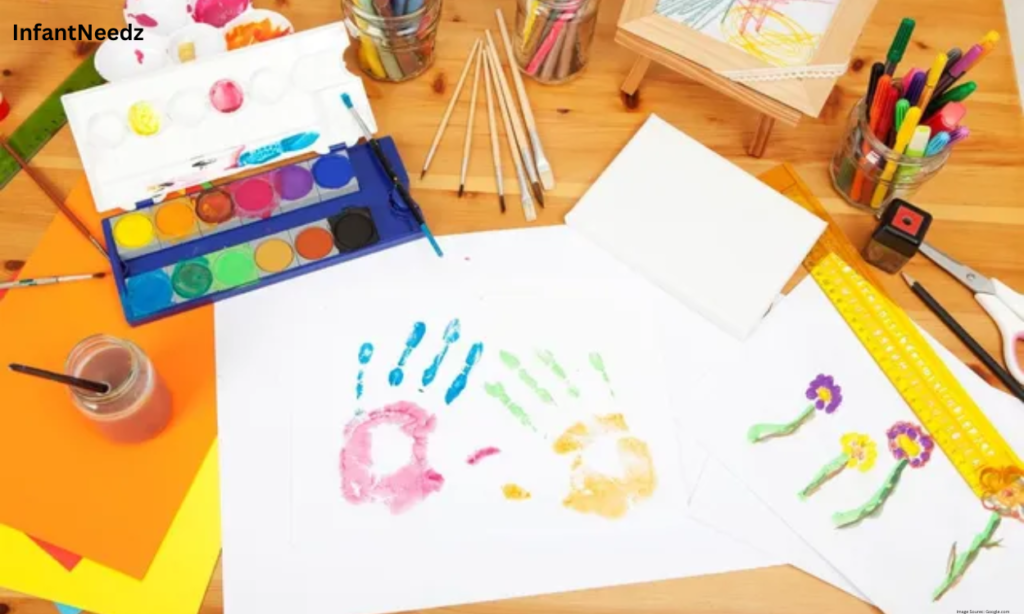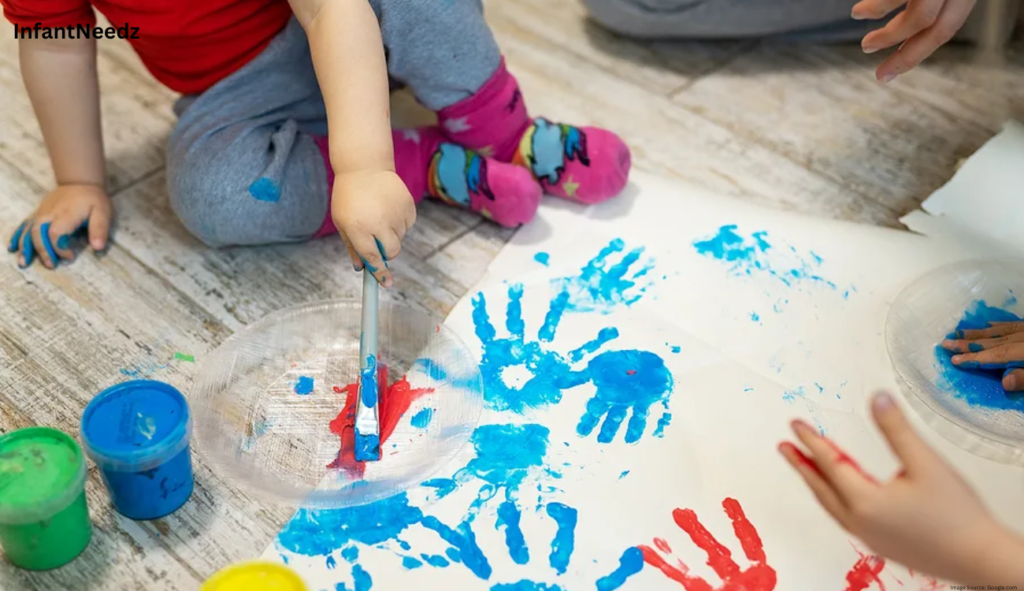Art-based creative play becomes a potent tool in the development of fine motor skills for young children. Creative activities like drawing, painting, or cutting and sculpting improve the little muscles of hands and fingers needed to write, button up clothes, or use utensils.
Here’s how art-based play enhances the development of fine motor, its benefits, and practical ideas on how to engage in such activities.
Table of Contents
How Art-Based Creative Play Aids in Developing Fine Motor Skills
- Hand-Eye Coordination: Through art-based creative play, most activities require being precise in their movement in order to increase what children see and how they move the hands. For instance, through painting or coloring in lines, children practice controlling their hand movement according to the visual guiding done.
- Strengthen the Hand Muscles: Things like cutting papers using scissors, pressing clay, and squeezing paint bottles build strength in hands and fingers. These activities begin to prepare children for more challenging tasks such as holding a pencil and writing.
- Precision and Control: Art-based play is a repetitive activity where the child can practice small, controlled movements. Main tasks to improve precision include such activities as threading beads or painting fine details, which require precision needed in real-life skills.
- Bilateral Coordination: When both hands are used at the same time-for example, holding paper with one hand while cutting with the other-children learn to coordinate each side of their body and improve their motor control as a whole.

Advantages of Art-Based Play for Fine Motor Skill Building
- Increased Creativity: As they are working on building their bodies, art offers them more than just a means of developing corporeal skills-there is also creative thinking and imagination. For instance, as they decide which colors to mix up or how to mold an object out of clay, that entails tapping into their creative side in the process of using their motor skills.
- Building Confidence: Whenever kids will complete the creative tasks properly, they will give confidence about themselves. If a child understands new techniques to cut any shape or draw within lines, that child will feel better.
- Improving Concentration and Perseveration: Art-based activities ask children to be focused and persevering; for instance, detailed work requires concentration and finally completes after a while.
- Preparation for School Activities: This creative play indirectly prepares the child for his school-based activities, such as handwriting, tying shoelaces even zipping or buttoning of one’s clothes.
Activity Art-Based Techniques in Fine Motor Development
- Finger Painting: The child develops the sensations and the strength in the fingers by using his hands and fingers. It is an excellent experiment with different textures and colors.
- Cutting Shapes: Cutting forms of safety scissors and colored paper help the child practice cutting the shapes and building patterns or objects.
- Modeling with clay or playdough: Curling, flattening, and pinching clays or playdough can condition the hands to make them stronger while also perfecting dexterity. Ask him or her to shape animals, objects, and other letters as you associate motor skill development with imaginative play.
- Thread beads: Threading beads or pasta to a string or yarn sharpens hand-eye coordination and accuracy.84 wordsclear Humanize AI This activity also promotes bilateral coordination since one hand holds the beads, and another hand carries the thread or string.
- Drawing with pencils or crayons: Make the child draw shapes, letters, or pictures using pencils or crayons that can develop grip strength and control. Refine strokes gradually for greater control of hands and fingers.

Advantages and Disadvantages of Art-Based Creative Play
Advantages
- Develops creativity and self-expression: The child will be able to express themselves as they may wish through their work.
- Coordination is enhanced: Inclusive art activities enhance a child’s skills regarding his motor coordination abilities and control, which are very crucial for most of his everyday activities.
- Prepares for school: Holding, focusing, and precise movement helps children prepare for writing and other related school activities.
Disadvantages
- Messy: Most art activities are rather messy and therefore need preparation and cleanup.
- Supervision requirement: Toddlers are less likely to be independent in the use of scissors or other small stuff that might possibly cause hazard.
- Resource intensive: Paint, brushes, paper and clay among other art supplies might require a constant replenishment with all the associated costs or time-consuming.
The Role of Sensory Play in Fine Motor Development
Art-based creative play often includes sensory actions that help develop fine motor skills. Children’s activities such as painting with their fingers, working with clay or other textured materials, may develop their sensory awareness with this motor development.
It will help the child be able to process touch, grip, and pressure so they will be in control of their movements. This assimilation of sensory input with motor skill enables children to have a more holistic learning experience and to be able to execute fine motor tasks better with their hands.
SMILIES PLAYSCHOOL
Conclusion
Art-based creative play is a tremendous and dynamic method to enhance the fine motor skill capabilities of children. By participating in a variety of activities, including drawing, painting, sculpting, and cutting, children enhance hand strength and finger strength, hand-eye coordination, focus, and creativity.
These basic motor skills form the basis for those everyday skills, like writing, buttoning, or even lacing up shoelaces, that further enable later academic and social achievement. Art play is that perfect balance of enjoyment with learning that all too early childhood education needs.
When you let your child include art in her or his daily play, you will provide him or her with an enjoyable experience with a rich opportunity to develop and hone skills in nearly every sphere of life.
FAQ’s
How Can Art Be Used in Developing Fine Motor Skill?
Art helps develop fine motor skill as the children are involved in drawing, painting, and sculpture. These all give strength to the muscles of hands, coordination, and precision in accomplishing tasks, like writing and tool use.
Some Possible Play Activities for Fine Motor Development Are?
Fine motor activities include finger painting, cutting clay, bead threading, and drawing, all of which have a positive effect on grip strength, coordination, and control in the hands and finger.
